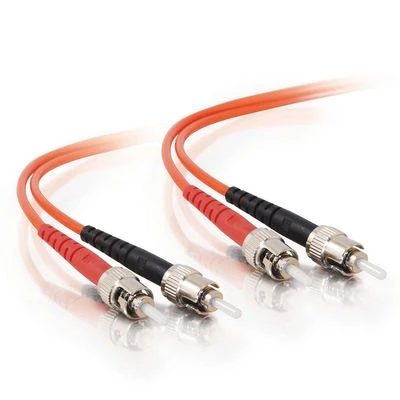Welcome to our comprehensive guide on the differences between fiber and cable networks. In this article, we will delve into the intricacies of both technologies, exploring their unique characteristics, advantages, and limitations. By the end, you will have a solid understanding of which option best suits your networking needs.
Understanding Fiber Optic Networks
Fiber optic networks have revolutionized the way we transmit data over long distances. Using thin strands of glass or plastic, known as optical fibers, these networks employ light signals to carry information. Let’s take a closer look at the key features of fiber optic technology:
Speed and Bandwidth: Fiber optic networks offer unparalleled speed and bandwidth capabilities. With the ability to transmit data at the speed of light, these networks can handle large volumes of information simultaneously. This makes them ideal for high-demand applications such as streaming, gaming, and cloud computing.
Signal Quality: Fiber optic cables are immune to electromagnetic interference, ensuring consistent and reliable signal quality. Unlike traditional copper cables, fiber optic cables do not suffer from signal degradation over long distances, making them suitable for transmitting data over vast networks.
Security: Due to the nature of fiber optic technology, it is incredibly difficult to tap into or intercept the data being transmitted. This inherent security feature makes fiber networks a preferred choice for businesses and organizations handling sensitive information.
Durability: Fiber optic cables are highly durable and less prone to damage compared to their copper counterparts. They are resistant to temperature fluctuations, moisture, and even electromagnetic interference, making them a reliable option for long-term network infrastructure.
Exploring Cable Networks
While fiber optic networks offer impressive capabilities, cable networks also have their merits. Cable networks, also known as coaxial networks, utilize copper or copper-coated aluminum cables to transmit data. Let’s examine the key aspects of cable technology:
Cost-Efficiency: Cable networks often present a more cost-effective solution for small to medium-sized businesses or individual consumers. The infrastructure required for cable networks is relatively inexpensive compared to fiber optics, making it an attractive option for those with budgetary constraints.
Availability: Cable networks have been around for several decades and are widely available in many residential areas. If fiber optic infrastructure is not yet available in your location, cable networks can provide a reliable alternative to access high-speed internet services.
Compatibility: Cable networks can easily integrate with existing infrastructure. If you have already established a cable network within your premises, upgrading to fiber optic technology may require significant rewiring and additional expenses. Cable networks allow for a smoother transition without the need for extensive modifications.
Latency: While cable networks can provide decent download speeds, they may experience higher latency compared to fiber optics. Latency refers to the delay in data transmission, which can affect real-time applications such as online gaming or video conferencing. Fiber optic networks tend to offer lower latency, resulting in a more seamless user experience for time-sensitive activities.
Cable Internet Providers vs Fiber Internet Providers
When it comes to choosing an internet service provider (ISP), one of the crucial decisions you’ll face is whether to opt for a cable or fiber internet connection. Let’s explore the differences between cable internet providers and fiber internet providers, so you can make an informed choice based on your specific needs and preferences.
Cable Internet Providers
Cable internet providers utilize coaxial cables to deliver internet connectivity to their customers. Spectrum, Xfinity, and Mediacom are the top 3 cable internet providers in the USA. These providers offer the best internet deals and the most affordable cable internet plans. Here are some key characteristics of cable internet:
Speed and Performance
Cable internet offers respectable download speeds, making it suitable for most online activities such as web browsing, video streaming, and online gaming. However, it is worth noting that cable internet speeds can be affected by factors such as network congestion and the number of users in your area, which may result in decreased performance during peak usage times.
Availability
Cable internet is widely available, particularly in urban and suburban areas. Cable infrastructure has been established for many years, meaning that cable internet providers often have extensive coverage across various regions. This availability makes cable internet a convenient option for those looking for reliable connectivity in areas where fiber optic infrastructure is not yet fully developed.
Bundled Services
Cable internet providers often bundle their services with television and phone packages, allowing customers to access a range of services from a single provider. This can be advantageous for individuals and households seeking the convenience of consolidated billing and integrated services.
Moderate Pricing
Cable internet plans typically fall within a moderate price range, offering a balance between affordability and performance. While prices may vary depending on the provider and plan, cable internet generally provides a cost-effective option for users who require decent speeds without breaking the bank.
Fiber Internet Providers
Fiber internet providers, on the other hand, utilize fiber optic technology to deliver internet connectivity. AT&T, Verizon Fios, Frontier, EarthLink, and Windstream are the top 5 fiber internet providers in the USA. AT&T fiber internet plans are the most popular as they offer the most extensive coverage area and symmetrical internet speeds up to 5 Gbps. Let’s explore the distinct advantages of fiber internet:
Blazing-Fast Speeds: Fiber internet is renowned for its lightning-fast speeds, capable of providing symmetrical upload and download rates. With fiber optic connections, you can enjoy seamless streaming, lag-free online gaming, and rapid file downloads. The impressive speeds offered by fiber internet are particularly beneficial for bandwidth-intensive activities, large file transfers, and businesses with demanding data requirements.
Reliability and Consistency
Fiber optic connections are known for their exceptional reliability and consistency. Unlike cable internet, which can be affected by external factors such as weather conditions and network congestion, fiber optic signals are immune to interference and provide consistent performance. This reliability ensures a smooth online experience, even during peak usage hours.
Future-Proof Infrastructure
Opting for fiber internet means embracing a future-proof infrastructure. Fiber optic technology has the capacity to handle increasing bandwidth demands and emerging technologies, ensuring that your internet connection can keep up with evolving digital requirements. By investing in fiber internet, you position yourself for long-term scalability and readiness for advancements in online services and applications.
Low Latency
Fiber internet offers exceptionally low latency, resulting in minimal delays and lag. This makes it an excellent choice for activities that require real-time responsiveness, such as online gaming, video conferencing, and cloud-based collaboration. The low latency of fiber internet ensures a smooth and seamless user experience in time-sensitive applications.
Conclusion
The future of networking is undoubtedly driven by fiber optics, with its unmatched speed, reliability, scalability, security, and environmental advantages. As businesses, industries, and individuals embrace digital transformation and seek to stay connected in an increasingly interconnected world, the inherent capabilities of fiber optic networks position them at the forefront of networking technology. Prepare for a future where blazing-fast speeds, uninterrupted connectivity, and seamless data transmission become the norm, all thanks to the incredible edge that fiber optics offer in shaping the networking landscape.
In conclusion, the differences between fiber and cable networks are significant, and each technology has its strengths and weaknesses. Fiber optic networks provide lightning-fast speeds, immense bandwidth, impeccable signal quality, enhanced security, and durability. On the other hand, cable networks offer cost-efficiency, wide availability, compatibility, and a smoother upgrade path from existing infrastructure. When deciding between the two, it is crucial to assess your specific requirements, budget, and long-term objectives. If speed, reliability, and scalability are paramount, fiber optics is the way to go. However, if cost considerations and existing infrastructure compatibility are priorities, cable networks can still serve you well. We hope this comprehensive guide has shed light on the differences between fiber and cable networks, enabling you to make an informed decision for your networking needs. Embrace the future of networking with fiber optics and unlock a world of limitless possibilities.







